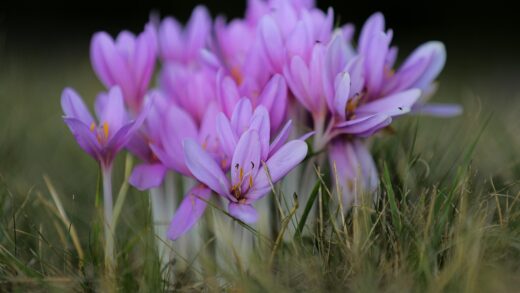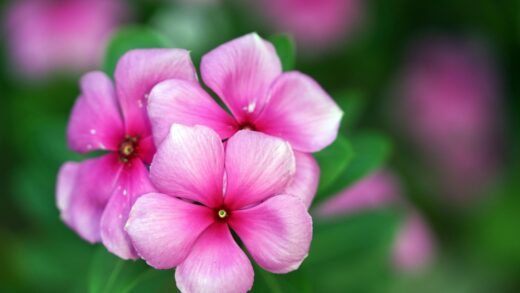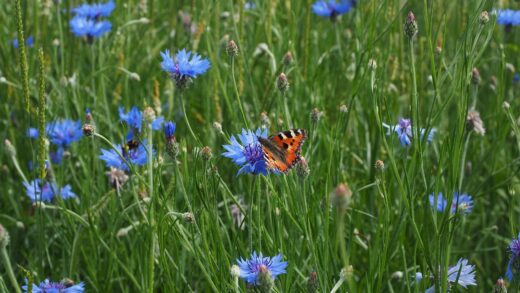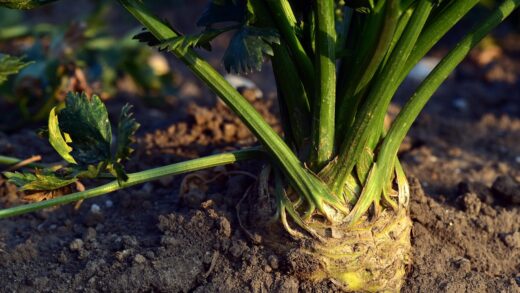The relationship between the dwarf iris and sunlight is direct and unequivocal: these plants are ardent sun-worshippers that require abundant light to truly flourish. Their light requirements are not merely a preference but a fundamental necessity that dictates their growth, health, and, most importantly, their ability to produce a spectacular display of flowers. Providing the correct amount of sun exposure is perhaps the single most important factor, alongside good drainage, in successfully cultivating these vibrant heralds of spring. Understanding the critical role that sunlight plays throughout their annual cycle is key to unlocking their full horticultural potential.
For optimal performance, dwarf irises demand a location that receives a minimum of six to eight hours of direct, unimpeded sunlight per day. This is especially critical during their active growing period in the spring. The intense energy provided by direct sunlight fuels the process of photosynthesis, allowing the plant to produce the carbohydrates necessary for developing strong leaves, sturdy flower stalks, and brilliantly colored blooms. A lack of sufficient light during this phase will result in weak, leggy growth, pale foliage, and a significant reduction in the number of flowers produced, if any at all.
The need for sun does not end when the flowers fade. After the blooming period, the plant’s foliage continues to work, absorbing sunlight and converting it into energy that is then transferred down and stored in the rhizome. This stored energy is vital, as it is what fuels the plant’s survival through its summer dormancy and winter rest, and it is also what determines the quantity and quality of the following year’s blooms. If the leaves are shaded by taller, neighboring plants that leaf out in late spring, the rhizome will not be able to “recharge” effectively, leading to a cycle of decline and poor performance.
Furthermore, direct sunlight plays a crucial role in maintaining the health of the rhizome itself. Iris rhizomes benefit from being “baked” by the sun during their summer dormancy period. This exposure to sun and heat helps to cure the rhizome, making it firmer and more resistant to the bacteria and fungi that cause rot. In shady, damp locations, the rhizome remains moist and cool, creating the perfect conditions for rot to set in. This is why a southern or western exposure, which receives the most intense sun of the day, is often the ideal placement for an iris bed.
When considering a planting location, it is important to think about the light conditions throughout the entire year. A spot under a deciduous tree might seem sunny in early spring before the tree has leafed out, providing enough light for the irises to bloom. However, as the tree’s canopy develops, it will cast the area into shade, depriving the iris foliage of the essential summer sun it needs to build up energy reserves. Therefore, the ideal location is one that remains in full sun from early spring all the way through the summer months.
More articles on this topic
The effects of insufficient light
When dwarf irises are planted in a location that provides insufficient light, the negative consequences become apparent in several ways. The most immediate and disappointing effect is on their flowering. A plant that is starved for light will divert its limited energy resources towards survival and vegetative growth, often at the complete expense of producing flowers. You may see a plant that produces a fan of leaves but fails to send up a single flower stalk, a common complaint that can almost always be traced back to a lack of direct sun.
Even if a light-deprived iris does manage to produce a few flowers, they will be of inferior quality. The flower stalks are likely to be weak, thin, and elongated, a condition known as etiolation, as the plant stretches in a desperate attempt to reach for more light. These weak stems may not be able to support the weight of the blooms, causing them to flop over. The flowers themselves will likely be smaller and their colors less vibrant and saturated compared to those grown in full sun.
The foliage of a shade-grown iris will also tell a story of struggle. Instead of the compact, sturdy, upright fans of leaves characteristic of a healthy plant, the foliage will be taller, more slender, and often a paler shade of green. This lanky growth is not a sign of vigor but rather a symptom of weakness. These elongated, soft leaves are also more susceptible to fungal diseases, such as leaf spot, because the lack of direct sun and poor air circulation in a shady spot create a more humid microclimate where pathogens can thrive.
Over the long term, insufficient light will lead to the gradual decline and eventual death of the plant. Because the foliage is unable to photosynthesize effectively, the rhizome will not be able to store enough energy to sustain itself from one year to the next. Each year, the rhizome will become smaller and weaker, producing progressively smaller fans of leaves until it eventually exhausts its reserves and dies out. This is why it is futile to try to grow dwarf irises in a shady border; they may survive for a season or two on the energy stored from their time at the nursery, but they are not sustainable in such a location.
More articles on this topic
Ideal placement in the garden
To meet the stringent light requirements of the dwarf iris, careful consideration must be given to their placement within the overall garden design. The best locations are those that are open and unshaded for the majority of the day. The front of a south-facing or west-facing border is often an ideal choice, as these spots receive the longest duration and greatest intensity of sunlight. Planting them at the front of the border ensures that they will not be overshadowed by taller perennials or shrubs growing behind them.
Rock gardens are another classic and highly suitable environment for dwarf irises. The open, sunny nature of a typical rock garden perfectly mimics their native steppe habitat. The stones and gravel in a rock garden also absorb and reflect heat, which helps to bake the rhizomes during their summer dormancy. Furthermore, the excellent drainage that is characteristic of a well-constructed rock garden addresses their other primary cultural need, making this type of feature an almost perfect home for them.
Dwarf irises are also excellent candidates for planting along the sunny edges of pathways and driveways. In these locations, they can be fully appreciated up close, and they are typically free from the shade of competing plants. They can also be used to create a low, vibrant border for raised beds. The elevated nature of a raised bed not only showcases the diminutive flowers but also provides the sharp drainage that they love, while the open exposure ensures they receive all the sunlight they require.
When planning companion plantings around your dwarf irises, it is important to choose neighbors that will not compete with them for light. Select other low-growing, sun-loving perennials or annuals that will not grow tall enough to cast a shadow over the iris foliage during the summer. Good companions might include creeping phlox, sedums, or other alpine plants that share similar cultural requirements for sun and drainage. Avoid planting them near fast-growing, dense shrubs or tall, leafy perennials like hostas or peonies.
Sunlight and disease prevention
The role of sunlight in the health of dwarf irises extends beyond photosynthesis and into the realm of disease prevention. A location in full, direct sun is one of the most effective tools a gardener has for preventing the most common iris ailments, particularly rhizome rot and fungal leaf diseases. Sunlight promotes a dry environment around the base of the plant, which is hostile to the pathogens that thrive in damp, shady conditions.
Rhizome rot, caused by the bacterium Erwinia carotovora, is most prevalent when the rhizomes are in cool, moist, and poorly aerated soil. By planting irises in a sunny location and at the proper depth where the top of the rhizome is exposed, the sun’s rays can directly warm and dry the rhizome. This sun-baking process hardens the rhizome and makes it much more difficult for the bacteria to penetrate and establish an infection. In essence, the sun acts as a natural sanitizer, keeping the rhizome healthy and rot-free.
Fungal diseases such as leaf spot and rust are also significantly less common on irises grown in full sun. The direct sunlight helps to quickly evaporate any moisture from the leaf surfaces after rain, dew, or irrigation. This reduces the amount of time that the leaves are wet, which is a critical factor in the germination and spread of fungal spores. Furthermore, the open, sunny location promotes better air circulation around the foliage, which also aids in drying the leaves and preventing the stagnant, humid conditions that fungi love.
In summary, sunlight is a powerful preventative medicine for dwarf irises. A plant that receives adequate sun is more vigorous and has a stronger immune system, making it inherently more resistant to all types of stress, including attacks from pests and diseases. When you provide your irises with the six to eight hours of direct sun they crave, you are not only ensuring they will have the energy to bloom beautifully, but you are also creating a growing environment that actively discourages their most common health problems.
📷 Jerzy Opioła, CC BY-SA 4.0, via Wikimedia Commons


















